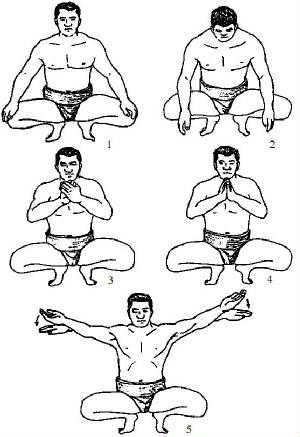
Sumo wrestling, with its roots tracing back over a thousand years, holds a profound cultural significance in Japan. Beyond being just a sport, Sumo embodies a complex tapestry of tradition, ritual, discipline, and national pride.
Sumo wrestling's origins can be traced back to ancient Japan, with roots embedded in both religious rituals and military training. The exact beginnings of Sumo are shrouded in myth and legend, even being described in the Kojiki (古事記), Japan’s oldest chronicle of myths, legends, and semi-historical accounts dating all the way back to 641 CE.

In one of its earliest forms, Sumo was a part of Shinto rituals performed to appease the gods, ensure bountiful harvests and cleanse evil spirits. These early Sumo matches were held at Shinto shrines and were imbued with spiritual significance and ritual ceremony.
During the Nara period (710-794) and Heian period (794-1185), Sumo began to gain popularity as a form of entertainment among the aristocracy and samurai class. Sumo matches were often included in festivities and celebrations, showcasing the strength and skill of the participants.
It was during the Edo period (1603-1868) that Sumo wrestling began to take on its modern form. Professional Sumo tournaments, known as basho (場所), became regular events, drawing large crowds and establishing Sumo as a popular spectator sport. The Edo period also saw the emergence of sumo stables, where wrestlers lived, trained, and competed under the guidance of experienced coaches.
A speciality cuisine in these sumo stables is the sumo wrestler's food of choice, Chanko-nabe; a Japanese stew made up of meat, seafood, tofu, and vegetables. Often accompanied by rice and other side dishes, this healthy, low-fat stew enables the wrestlers to eat large quantities of food while maintaining relatively healthy lifestyles. Although they can consume up to 10,000 calories a day, they maintain unexpectedly low levels of cholesterol and normal levels of triglycerides (a type of fat in the blood) in spite of weighing around 135-180 kilograms!

Nowadays, the annual Sumo tournaments, six major tournaments held each year in Tokyo, Osaka, Nagoya, and Fukuoka, attract millions of spectators from around the world, with tickets often selling out months in advance. These tournaments are not merely sporting events, but grand spectacles steeped in tradition and pageantry. Each basho unfolds over 15 days, with wrestlers competing for the coveted championship title and the admiration of fans. As of the writing of this article, the current tournament – known as the Haru Basho – is happening in Osaka right now, from March 10 until March 24.
On the surface, Sumo might seem a simple sport, where the two competitors try to force one another to touch the ground with anything other than the soles of their feet, or out of the circular ring in which they fight. However, at its core, Sumo reflects deeply ingrained cultural values. Respect, humility, and discipline are paramount in the world of Sumo. Wrestlers, known as rikishi (力士), adhere to a strict code of conduct both inside and outside the ring, guided by centuries-old customs and rituals.
One of the most iconic aspects of Sumo is its elaborate pre-match rituals, known as shiko (四股) and chiri-chozu (塵手水). These rituals serve not only as a physical warm-up but also as a display of respect for the sport's traditions and for their opponent. Additionally, the symbolic throwing of salt into the ring, called shiomaki (塩撒き), purifies the arena and wards off evil spirits, highlighting the spiritual aspect of Sumo.
Sumo's cultural significance extends beyond the ring, permeating various aspects of Japanese society. The sport is deeply intertwined with Shintoism, Japan's indigenous religion, and is often performed in Shinto rituals and ceremonies. Sumo wrestlers are revered as symbols of strength and discipline, embodying ideals that resonate with Japanese cultural values.
Moreover, Sumo has left an indelible mark on Japanese art, literature, and popular culture. From woodblock prints depicting legendary Sumo matches to haiku poems celebrating the sport's grace and power, Sumo has inspired countless works of art and literature throughout the centuries. In modern times, Sumo continues to captivate audiences through television broadcasts, manga, anime, and even video games, further solidifying its place in Japanese popular culture. Sumo wrestlers are revered as national heroes, representing the strength, discipline, and indomitable spirit of the Japanese people.
Today, Sumo wrestling remains one of Japan's most cherished traditions. While the sport has adapted to the modern era with the introduction of television broadcasts and sponsorship deals, it remains deeply rooted in Japan's history, traditions, and values. From its ancient origins to its enduring popularity in modern times, Sumo continues to fascinate and inspire people around the world, serving as a testament to the enduring power of tradition and the human spirit.













Comments